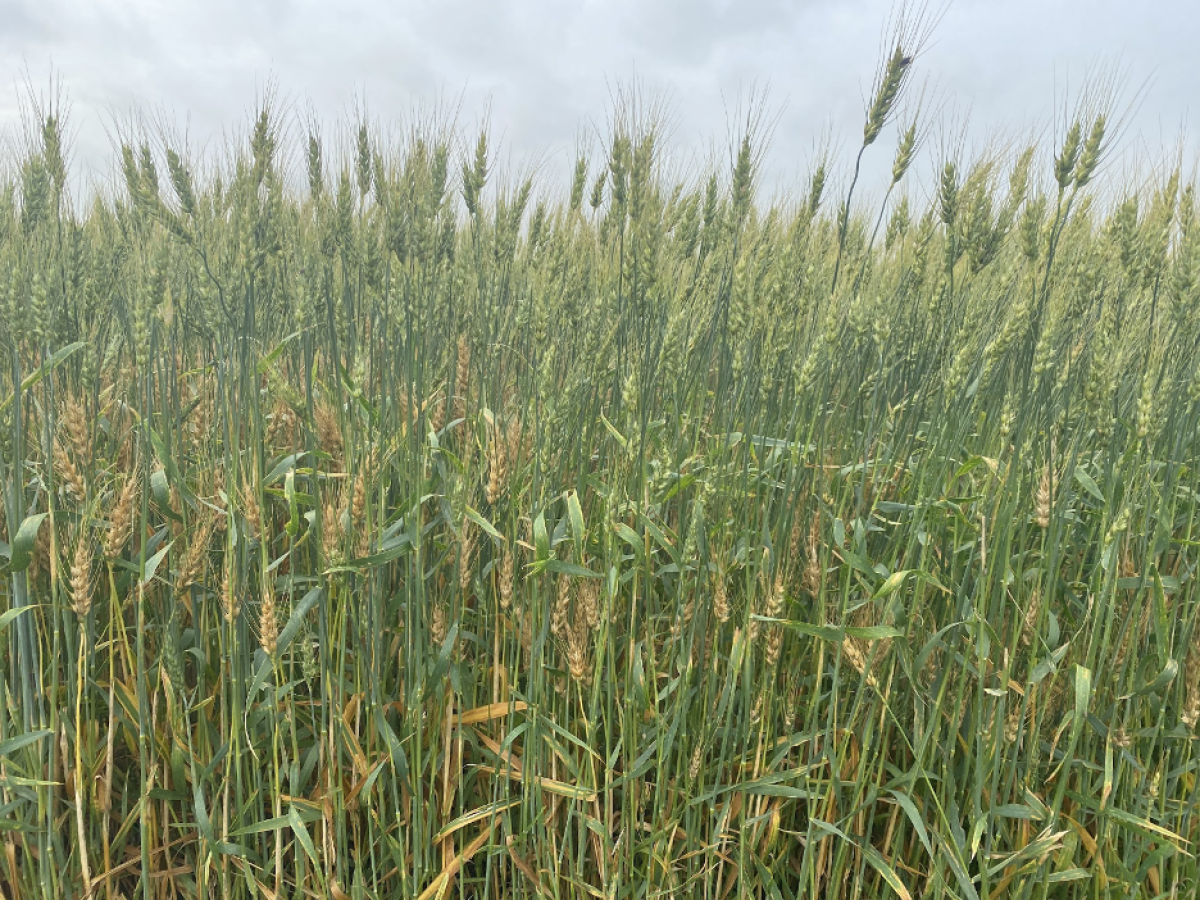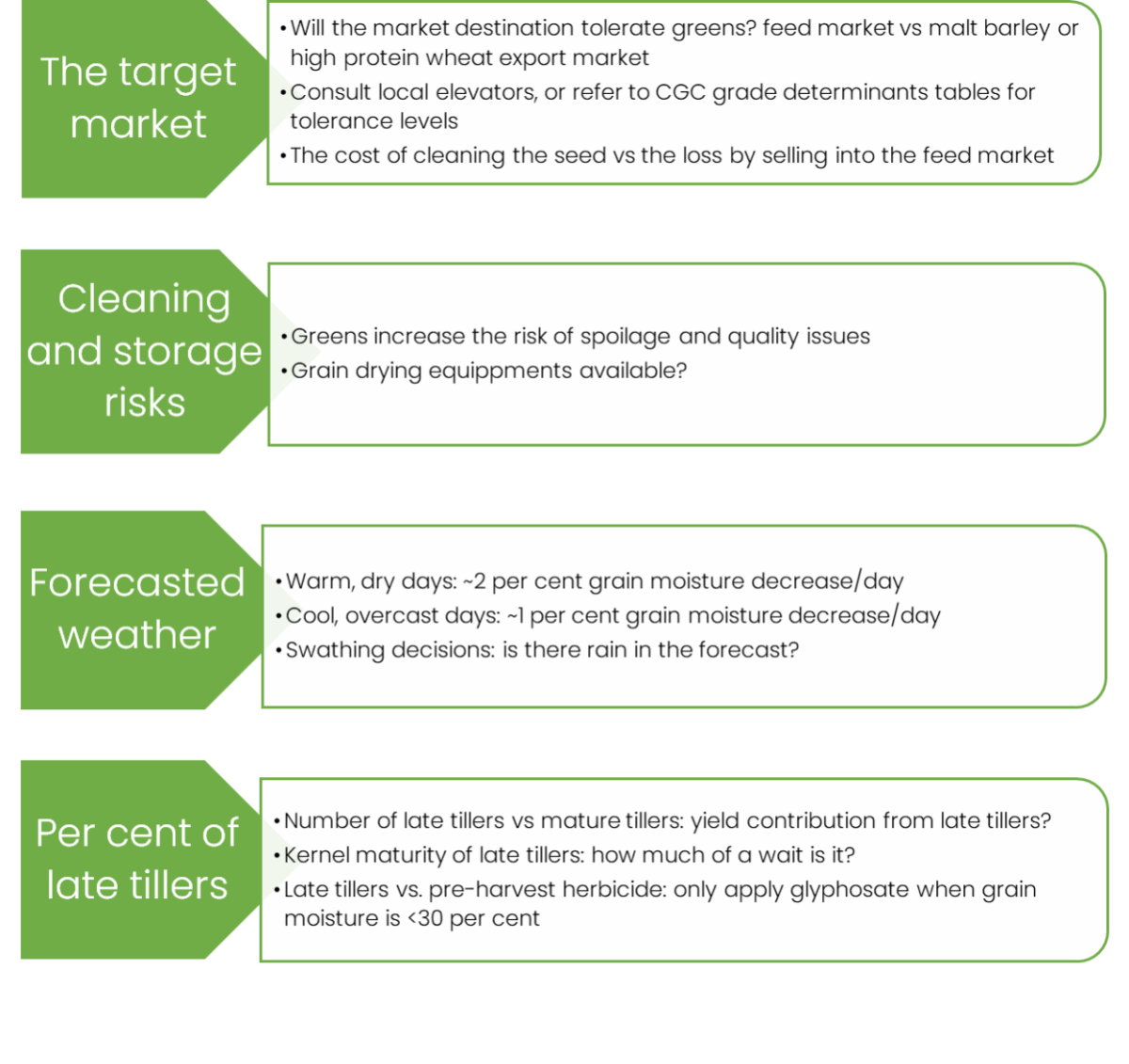How to manage delayed harvest in fall and other considerations
Since June, the Northwest and Northeast regions received relatively more moisture than the rest of the province. The rainfall brought better crop conditions but also created challenges. Plants produced a second flush of tillers following the rain events in mid to late June. The heads from the late tillers were one to two weeks later in development, causing challenges in getting the crop off on time (Figure 1). How to manage late tillers? What to consider when managing late tillers? And are there ways to mitigate harvest issues through the growing season? Let’s take a look.

Figure 1. Multi-stage wheat crop near Barrhead, AB.
The following chart outlines considerations for developing a reasonable management plan for late tillers. Keep in mind that every farm is unique. The optimum solution might differ from one farm to the other, depending on the location, equipment, harvest window, target markets, etc.
More comprehensive information on each consideration is available in this factsheet:
Managing Late Tillers in Wheat and Barley

Generally, each farm must weigh the risks and rewards when deciding on late tiller management.
Additional resources:
Canadian Grains Council: primary grade determinant tables
In addition to the risk mitigation measures at harvest time, we can plan ahead for issues we can control in future years. The following are practices to consider that reduce risks from late harvest situations.
Variety selection: choosing earlier maturing varieties
Consider choosing an earlier maturing variety. Refer to the Alberta Seed Guide for the maturity ratings. Also, consult with local seed distributors and seed growers about maturity dates in your geographic area. Crop maturity dates differ between areas. A variety that is, on average, two days later maturing across the province may be only one day later in southern Alberta but could be three or more days later in a northern location.
Establish uniform plant stand early
Following seeding best management practices (BMP) helps achieve good plant establishment early in the season. The BMPs include:
- Use high-quality seeds: end any seed that you intend to use to accredited seed labs to check for percentage viability. Take the germination rate into consideration when calculating the seeding rate.
- Using higher seeding rates: higher seeding rates produce a higher plant stand, which translates to fewer secondary tillers and narrower maturity windows. Find the recommended seeding rates for wheat and barley, and use the seeding rate calculator to find the accurate amount of seeds required.
- Seeding early: Planting by soil temperature instead of calendar date. Seeding at soil temp 2-6 C (measured at 10 a.m., 5 cm depth) is proven by research to produce the optimum yield.
- Proper seeding depth: Deep seeding delays emergence and pushes back the harvest window. The ideal seeding depth for wheat and barley is 3.75 to 5 cm. This depth allows the seed to be placed deep enough to access adequate moisture and shallow enough to ensure quick emergence.
- Managing seedling pests: seedling pests such as wireworms, cutworms and damping off reduce emergence rate and delay plant development1. Seed treatment and crop rotation help manage seedling pests and contribute to more uniform crop emergence.
Fertilizer management
Pay attention to safe rates of seed-placed fertilizer. High rates of seed placed N and P can damage seed viability and emergence. Use extra caution when seeding into dry soils. Calculate your seed-safe fertilizer rate using soil type and seed bed utilization (SBU). More information on seed-safe fertilizer rates is in this article.
Deficient soil phosphate levels can delay cereal crop maturity by one to two weeks2. Adequate phosphorous through soil sampling, soil testing and following phosphate fertilizer recommendations results in rapid growth and early maturity.
In conclusion, managing late harvest is never an easy task. Taking the farm-specific factors into consideration helps reach reasonable and relatively profitable solutions. For the future years, planning ahead with proper variety selection, seeding best management practices and fertilizer management help the crop mature early and mitigate the losses from delayed harvest.
References
1. Canola Council of Canada - Factors that delay maturity
2. Grain News - Speeding up crop maturity

